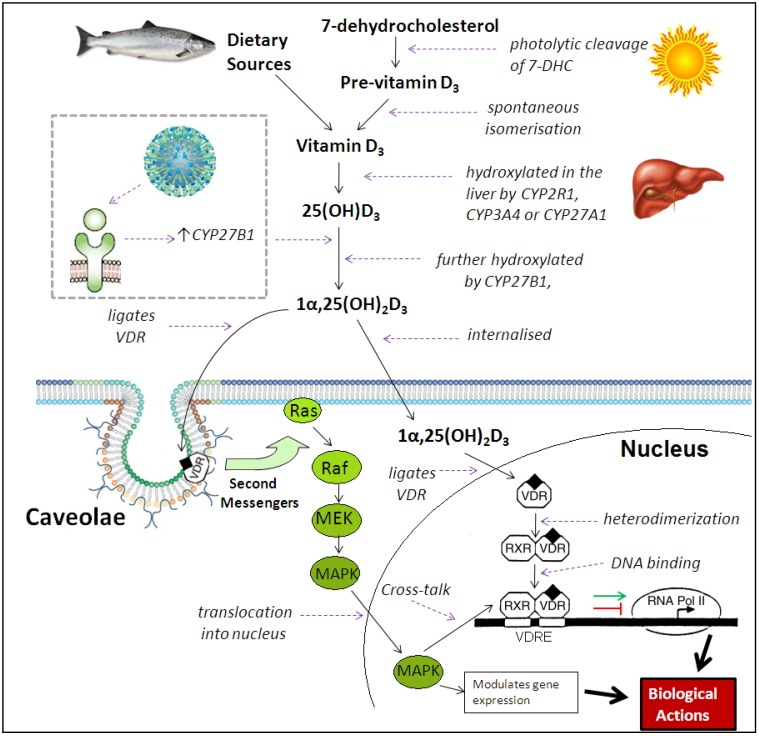Figure 2.
Metabolism of 1α,25(OH)2D3. Vitamin D3 is either obtained from dietary sources or UV synthesis, before two hydroxylations occur to produce the active metabolite 1α,25(OH)2D3. TLR ligation can also increase levels of CYP27B1, resulting in enhanced 1α-hydroxylation of 25(OH)D3. The 1α,25(OH)2D3 then binds to nuclear or membrane vitamin D receptors (VDRs). Nuclear VDR ligation results in heterodimerization with retinoid X receptor (RXR) and binding to vitamin D responsive elements (VDRE) in promoter regions of responsive genes. Components of the RNA polymerase II complex are then recruited for induction of gene transcription, or transcription is repressed. Membrane caveolae-associated VDR ligation results in the activation of second messenger systems, with one effect being the initiation of Ras/MAPK signal transduction. Nuclear MAPK modulates gene expression and engages in cross-talk with the VDR-RXR-VDRE complex. (Adapted from Slatopolsky et al. [104], and Parton and Simons [105]).

